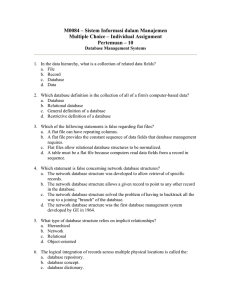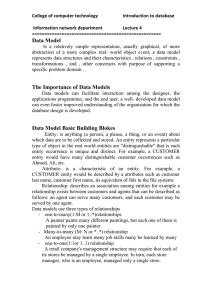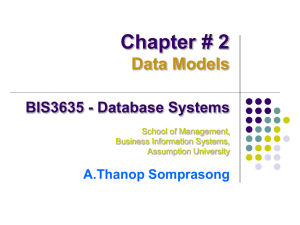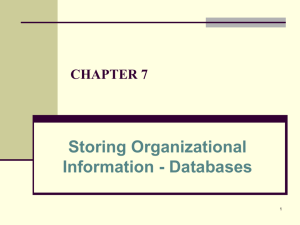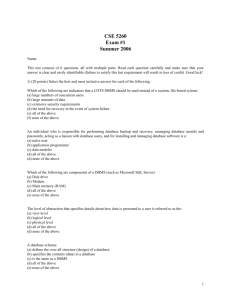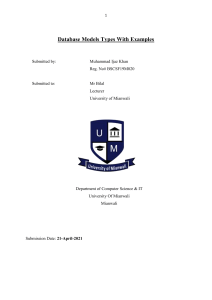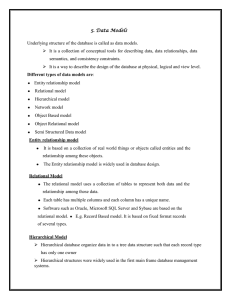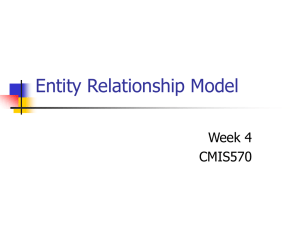VAAGDEVI DEGREE COLLEGE
advertisement
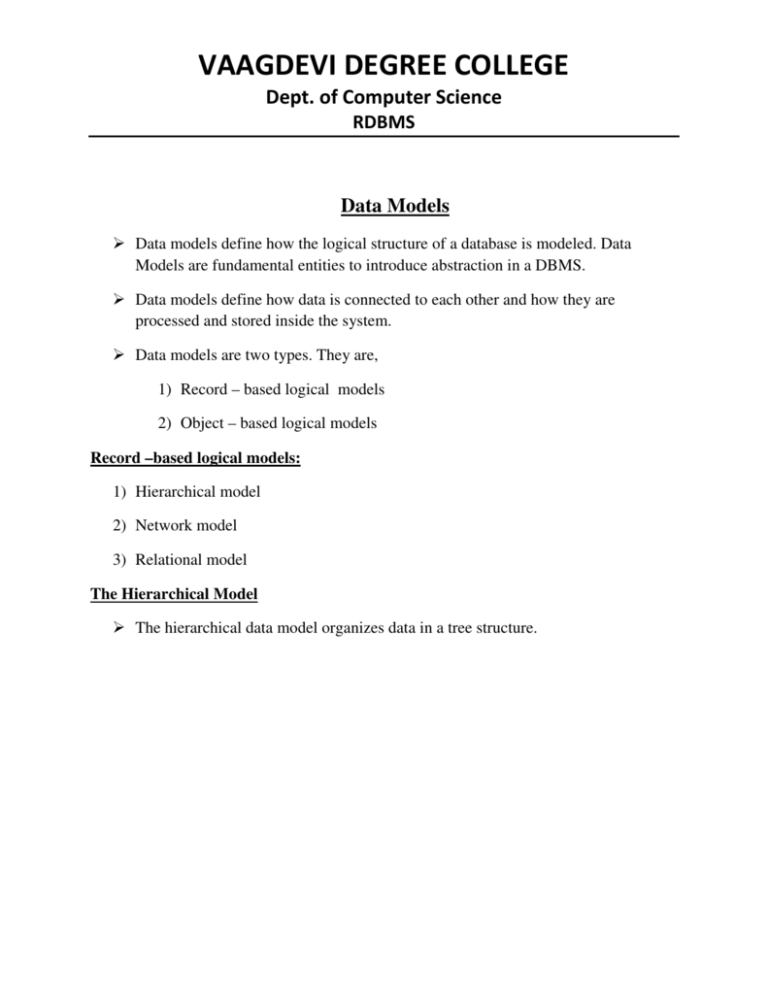
VAAGDEVI DEGREE COLLEGE Dept. of Computer Science RDBMS Data Models Data models define how the logical structure of a database is modeled. Data Models are fundamental entities to introduce abstraction in a DBMS. Data models define how data is connected to each other and how they are processed and stored inside the system. Data models are two types. They are, 1) Record – based logical models 2) Object – based logical models Record –based logical models: 1) Hierarchical model 2) Network model 3) Relational model The Hierarchical Model The hierarchical data model organizes data in a tree structure. There is a hierarchy of parent and child data segments. Record types are the equivalent of tables in the relational model, and with the individual records being the equivalent of rows. To create links between these record types, the hierarchical model uses Parent Child Relationships. The Network Model A network database model is a database model that allows multiple records to be linked to the same owner file. The model can be seen as an upside down tree where the branches are the member information linked to the owner, which is the bottom of the tree. The multiple linkages which this information allows the network database model to be very flexible. In addition, the relationship that the information has in the network database model is defined as many-to-many relationship because one owner file can be linked to many member files and vice versa. 2 Relational Model The most popular data model in DBMS is the Relational Model. It is more scientific a model than others. Data is stored in tables called relations. Each row in a relation contains a unique value. Each column in a relation contains values from a same domain. Object – based logical model: 3 Entity-Relationship Model Entity-Relationship (ER) Model is based on the notion of real-world entities and relationships among them. While formulating real-world scenario into the database model, the ER Model creates entity set, relationship set, general attributes and constraints. ER Model is best used for the conceptual design of a database. ER Model is based on − • • Entities and their attributes. Relationships among entities. Entity − An entity in an ER Model is a real-world entity having properties called attributes. Every attribute is defined by its set of values called domain. For example, in a school database, a student is considered as an entity. Student has various attributes like name, age, class, etc. Relationship − The logical association among entities is called relationship. 4

